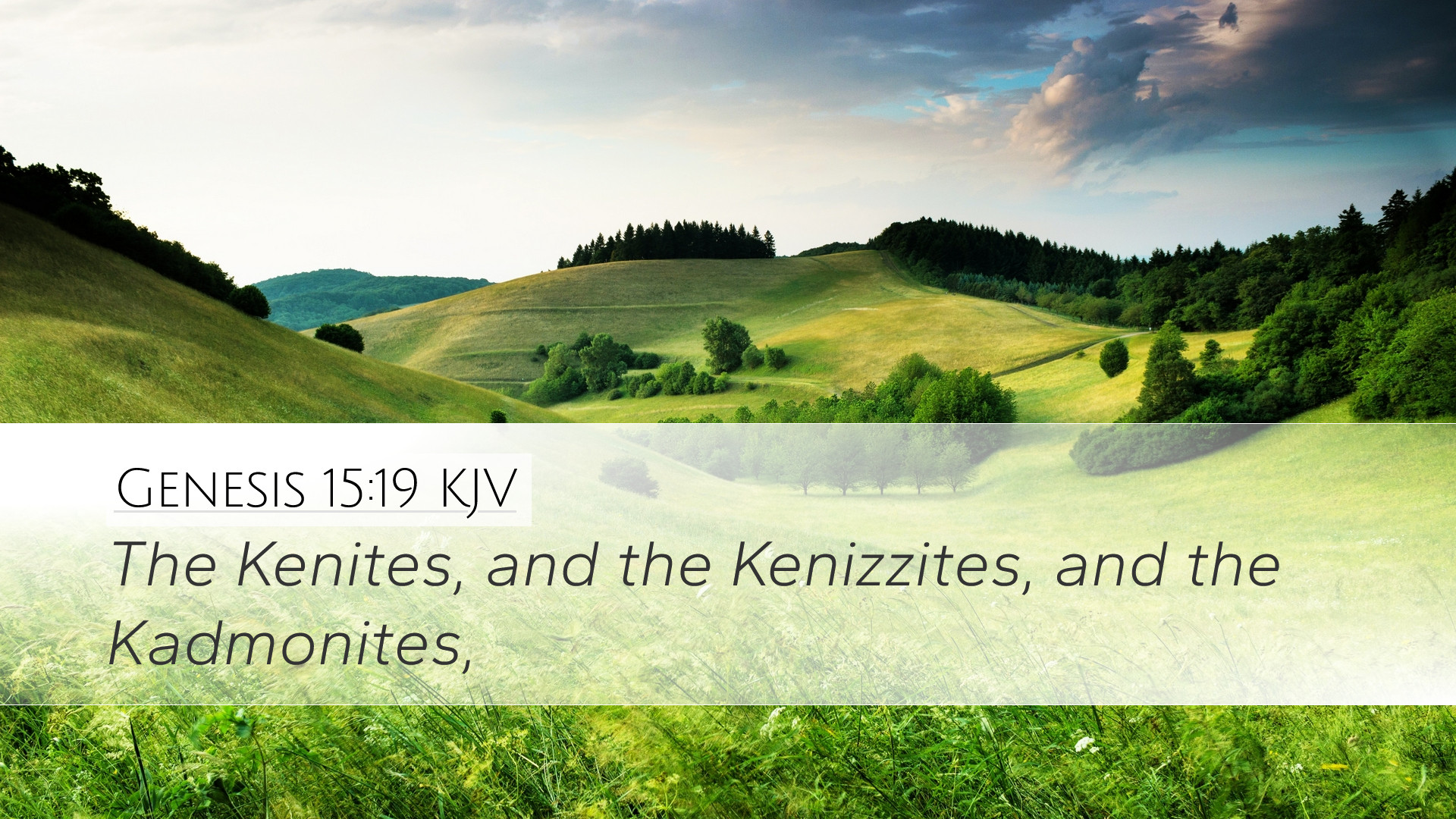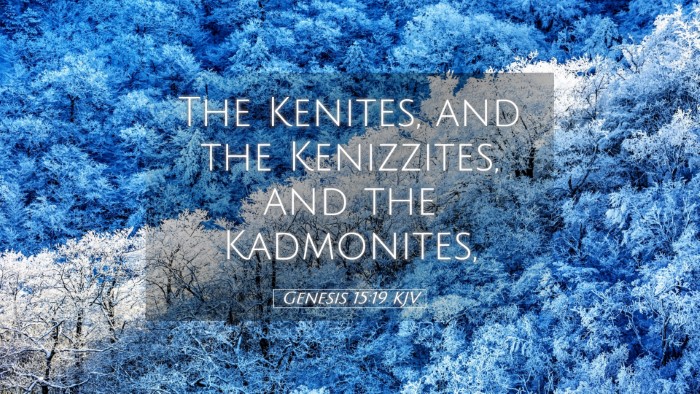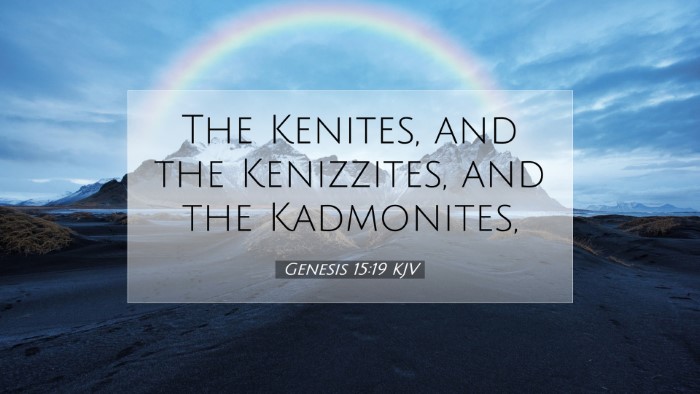Commentary on Genesis 15:19
Genesis 15:19 states:
"The Kenites, and the Kenizzites, and the Kadmonites,"
This passage is part of the broader narrative concerning God's covenant with Abram (later Abraham). The mention of various nations and peoples serves to underline God's promise of land and the significance of the heritage of Abraham's descendants.
Historical Context
To fully appreciate Genesis 15:19, it is vital to understand its historical context. This chapter illustrates a crucial moment in the narrative of Abraham, where God reaffirms His covenant and promises to give the land of Canaan to his offspring. The mention of diverse peoples, like the Kenites, Kenizzites, and Kadmonites, points to the various groups inhabiting the land at that time.
Commentary Insights
Matthew Henry's Commentary
Matthew Henry emphasizes the significance of the specific tribes mentioned. He notes:
- The Kenites are described as descendants of Jethro, Moses's father-in-law, who indicated a connection to Israel's own history and destiny.
- The Kenizzites are considered a branch of the Edomites, linking Abraham's promise to neighboring nations that bore significance in the unfolding biblical narrative.
- The Kadmonites are often related to the eastern groupings that interacted with Abraham, setting the stage for Israel's future conflicts and alliances.
Henry concludes that the inclusion of these specific peoples serves a dual purpose: to foretell the dispossession of these nations and highlight the fulfillment of God's promise to grant Abraham's descendants a significant landholding.
Albert Barnes's Notes
Albert Barnes provides a detailed etymological breakdown of the names mentioned in Genesis 15:19. He suggests that:
- The Kenites were nomadic and skilled in metalwork, denoting a people well-integrated into their environment.
- The Kenizzites suggest possible origin ties to the land of Canaan, possessing a claim to the roots of Abraham's extended family.
- The Kadmonites signify a group known as “the ancient ones,” which may allude to a civilization rich in history predating many that would come after them.
Barnes delineates the importance of recognizing these peoples as part of God's providential orchestration in history, leading to the formation and shaping of Israel as a distinct national and religious entity.
Adam Clarke's Commentary
Adam Clarke offers a thematic approach that centers on the covenant's implications for future generations. He points out that:
- The listing of these nations illustrates the complete dominion that God promises to His chosen people.
- Understanding these inhabitants' identities serves as a reminder of the bigger theological drama at play, encompassing judgments on nations and God's sovereignty.
Clarke sees the entirety of God's promise in Genesis 15:19, encapsulating both immediate and eschatological fulfillment. He claims that the text not only signifies a past event but foreshadows theological truths about land, belonging, and divine blessing that resonate throughout the biblical narrative.
Theological Reflections
This verse raises intriguing theological points for pastors, students, and scholars alike:
- God's Sovereignty: The passage is a vivid reminder of God's sovereignty in history and His control over the nations.
- Covenantal Fidelity: It speaks to the faithfulness of God in fulfilling His promises, urging believers to trust in God's plans for their lives.
- Legacy of Faith: The genealogy of peoples emphasizes the significance of spiritual heritage and the unfolding of God's redemptive purposes through diverse cultures.
Conclusion
Genesis 15:19 encapsulates themes of promise, heritage, and divine authority that continue to resonate throughout Scripture. The insights from Matthew Henry, Albert Barnes, and Adam Clarke provide a rich foundation for understanding this passage's implications for both the ancient audience and contemporary believers.
As one reflects on this verse, there is an invitation to recognize the broader tapestry of God’s redemptive plan—a reminder to engage with Scripture as a living document, continually speaking to the present reality of faith and community.


